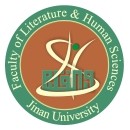The Department of Translation and Languages has two language laboratories. These laboratories basically give students the facility of acquiring the basics of listening as one of the most important skills, especially for those who have never learned English as a language of specialization, or other languages that the students would like to learn. The labs can help accelerate the acquisition of English and they help students comprehend what other English professors say in their literary and linguistic lectures. The labs also help students to integrate listening, as an input skill, with the output skills (speaking and writing).
The students of Translation also benefit from the labs; there are functions for teaching all types of translation (sight, audiovisual translation, and simultaneous interpreting) . In later stages, the laboratories are used to tackle audiovisual literary genres like discussing films.
System
The system is Multimedia Language Learning System developed to change previous cassette type language education to advanced MP3 based education with no additional investment for student PCs. This system offers all the convenient functions of a PC environment without using a student PC.
1. Hardware
Each laboratory, which seats thirty students, is equipped with the hardware for thirty sound devices that are connected to the administrator's main computer. This main computer is also connected to a projection system and a tape recorder for an ideal technological class.
2. Software
On the administrator's computer, the teacher enjoys many programs that create a perfect modern teaching environment. He/she can play audio or audiovisual materials and communicate with the students through the system in different ways depending on the task.
The student terminal is high tech equipment and combines a teacher PC and telecommunication by the TCP/IP network. The device (the student's terminal) helps with the self-learning method where they can record certain MP3 materials and then submit it to the administrator's computer. The system can also support cassette material through a device connected to the system.
Effectiveness
The grades of the students indicate that the listening comprehension of those who attended the lab sessions was between 70-80 percent; while those who did not was between 20-30 percent. While the Translation students have acquired speed and flexibility, due to the variety of the audiovisual texts.
During the lab session, the instructor enjoys many functions that facilitate class management. All of the functions are buttons on the instructor's computer:
Pair Work : The instructor assigns students to talk in pairs about the subject matter. The pairs can be selected randomly, i.e. not necessarily sitting next to each other. Unlike typical classes, he/she can assign different students (sitting in different places) for each activity without wasting time in re-distributing students' places. The instructor can monitor students' interaction throughout the activity.
Group Work : The process of assigning groups is also random where the instructor can monitor students' interaction throughout the activity.
Presentation : Any student can talk and all others can hear him/her, but they have to press the ‘CALL' button on their sound device so that the instructor allows him/her to talk in public or privately.
Attendance : The software provides facilities for checking attendance with the press of a button.
Translation : There are functions for teaching all types of translation (sight, audiovisual translation, and simultaneous interpreting), with the ability of recording all the translated texts and collecting them.
Tests : Various types of tests can be taken which saves a lot of time and effort compared to the old-fashioned classes.
The system helps instructors and students to easily and efficiently use various multimedia materials including the Internet during class. Taking tests, storing test results, real time conversation between teacher and student, complete class control and more are also provided.

Follow us on